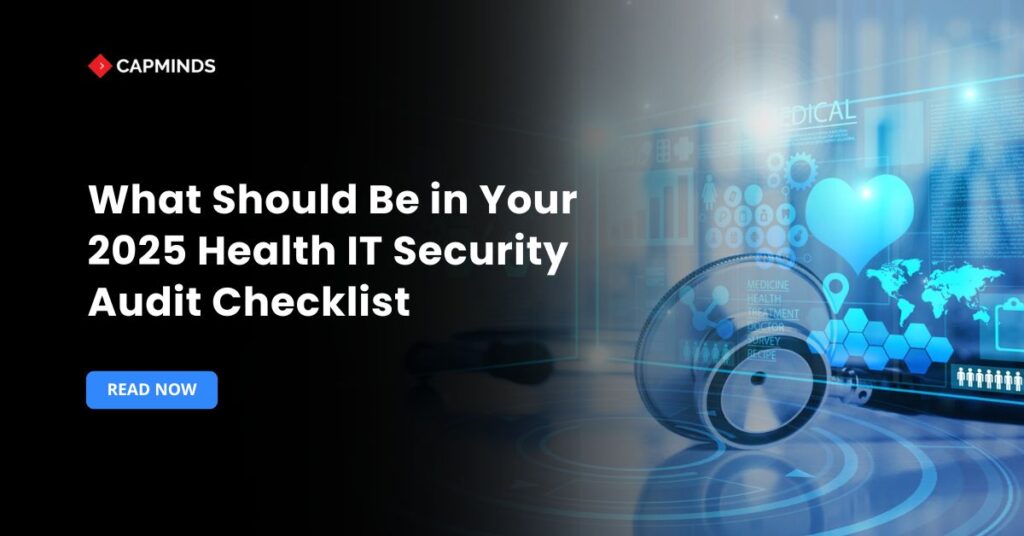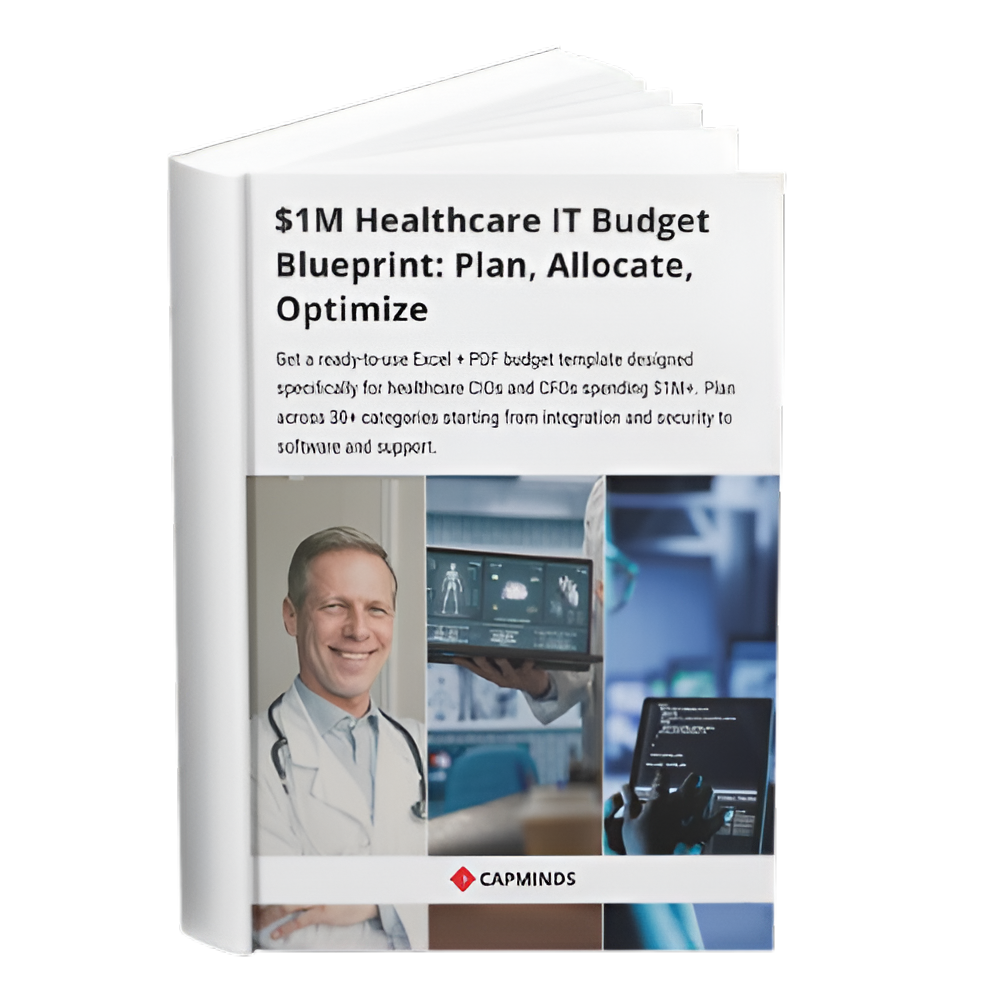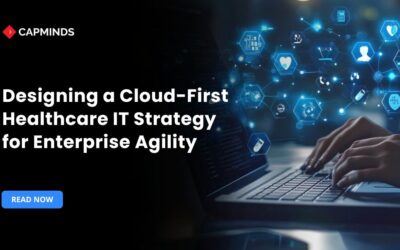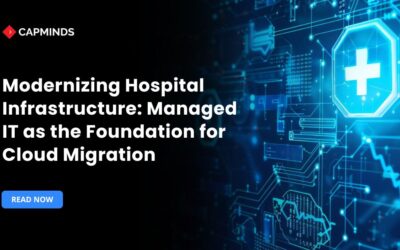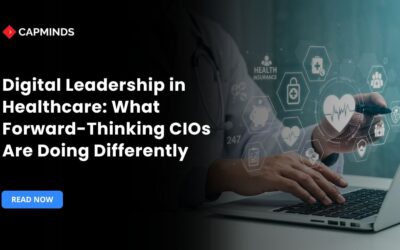What Should Be in Your 2025 Health IT Security Audit Checklist
Healthcare facilities will face major cybersecurity threats. The frequency of cyberattacks targeting clinics and hospitals is continuously increasing. In 2023, 168 million patient records were made public in the US alone. Attacks using ransomware and hacking include more than just technical issues. They can delay therapies, disrupt clinical procedures, and jeopardize patient safety. There has never been a greater need for enhanced digital security measures.
The regulators are acting. The US Department of Health and Human Services has begun performing targeted assessments, focusing on the security measures most vulnerable to ransomware and hacking. The stakes for providers are high. A single data breach can cost more than $10 million on average. More than that, long-term brand damage and a loss of patient trust.
In order to preserve protected health information and adhere to HITECH, HIPAA, and other rules, organizations need to be proactive. Everyone is impacted by this, including independent clinics, large health systems, and cutting-edge health IT companies.
A health IT security audit checklist for 2025 can be found below. It highlights the key themes that all healthcare executives should discuss, and each is stated in simple, understandable terms.
Related: 5 Hidden Costs of Aging Health IT Infrastructure
10 Step Checklist for 2025 Health IT Security Audit
1. Risk Assessments and Management
A solid health IT security plan is based on regular risk assessments. Every healthcare professional should regularly review patient data for any flaws. This includes detecting current system vulnerabilities as well as possible threats like as malware, hackers, insider errors, and natural calamities.
The HIPAA Security Rule requires organizations to conduct an “accurate and thorough” analysis of the risks to electronic PHI. This is a constant process. A thorough evaluation should be carried out at least once a year, and if systems, procedures, or technology change.
Vulnerabilities, including unencrypted laptops, unsupported operating systems, and outdated security updates, are frequently found by these tests. Businesses can fix these vulnerabilities before an attacker does if they are discovered early.
2. Access Control
Access control ensures that only authorized workers have access to patient data and critical health IT systems. Several clinic and hospital staff members use electronic health records and associated technology. However, not all users should have access to all of the information.
- The presence of strong access controls should be confirmed using your audit checklist.
- Each user needs a unique login.
- Only the information and capabilities required for their specific work should be allowed.
- Technical safeguards that enhance patient privacy and system security underpin these initiatives.
- In order to avoid illegal eavesdropping if a user forgets to log out, certified EHR systems must verify user identities and automatically end inactive sessions.
- That means if a nurse steps away from a workstation, the system will time out so that another person can’t just walk up and view patient records.
3. Data Encryption
Since encryption is applicable to both “at rest” and “in transit” data, it is an essential item on the 2025 checklist. It involves converting data into a coded format that is unreadable by unauthorized parties.
If a patient’s laptop is lost or stolen, strong encryption shields patient records from unwanted access. This is among the main causes of the high prevalence of encryption in the medical field.
Since the middle of the decade, its widespread use has greatly reduced breaches brought on by lost or stolen devices.
- The security of databases, hard drives, or backup tapes holding electronic health information should be confirmed by your audit by industry standards.
- This guarantees compliance, lowers risk, and protects patient privacy.
4. Incident Response and Recovery Planning
Even with the strongest safeguards, incidents might occur, such as malware infection, server outage, or actual breach. That is why an incident response strategy is a requirement on the security audit checklist. An incident response plan is essentially a playbook for what to do when a security incident occurs.
HIPAA regulations demand policies and processes to address security incidents. Organizations must be able to recognize and respond to occurrences, limit any negative consequences, and document what occurred. Your checklist should include documentation of the emergency response plan, training for staff, and regular updates based on drills or previous lessons.
5. Business Associate Agreements
Rarely do healthcare organizations function independently; instead, they depend on numerous outside vendors and partners that may handle patient data.
Any vendor who handles protected health information on your behalf is regarded by HIPAA as a business associate, and you are required to enter into a Business Associate Agreement with them. It is vital to ensure that your audit checklist includes current BAAs.
A BAA is a legal contract that does more than satisfy a requirement; it spells out the vendor’s responsibility to safeguard the data and to uphold HIPAA standards. A BAA remains a legal requirement whenever PHI is shared with a third-party vendor.
The audit should ensure that all suppliers handling PHI have been identified and signed BAAs, and that those agreements are reviewed regularly.
BAAs not only fulfill HITECH’s mandate but also protect your organization by extending your security program to anyone who touches your data. Neglecting BAAs could lead to severe penalties and exposure, so this checklist item helps ensure no partner is a weak link in privacy and security.
6. Staff Training and Awareness
Humans are often the weakest link in security. This makes employee training and awareness a crucial component of a health IT security checklist. Healthcare executives and doctors are preoccupied with patient care; thus, security policies must be reinforced through ongoing training.
HIPAA requires security awareness training for all workforce members who have access to PHI. This means that everyone, from doctors and nurses to receptionists and IT staff, should understand the fundamentals of patient data security, such as:
- How to recognize suspicious emails
- The importance of strong passwords
- Proper patient record handling
- Adherence to policies like not installing unapproved software.
A good audit will ensure that the company offers continuing training rather than just a one-time orientation. In 2025, it’s common to do annual refresher courses, simulated phishing exercises, and even short monthly tips to keep security top-of-mind.
Well-trained employees may detect and avoid these hazards, such as identifying a scam email and reporting it before any damage is done. Include checks that training is documented and that content is updated to cover new threats.
7. Endpoint and Device Security
Modern healthcare relies on a multitude of devices, including desktop computers at nursing stations, clinicians’ laptops and tablets, smartphones used for secure messaging, and even smart medical devices connected to patients.
Every one of these endpoints is a potential entry point for attackers, so device security is a key audit item. Your security checklist should cover both common endpoints and specialized medical equipment.
- Start with devices that handle patient data, such as laptops, desktop computers, and mobile devices. Be sure to properly secure them.
- Encrypting devices is essential. Due to the loss or theft of unencrypted computers, numerous breaches have occurred in the past.
- Sensitive information is now protected at the most basic level by this easy step.
- Next, make sure that every gadget is up to date. Regularly apply patches and software upgrades. Older systems frequently have recognized flaws. You may quickly fill in those gaps by updating them.
- This is especially critical for Internet-of-Medical-Things devices and other clinical equipment that uses outdated software.
- Roughly half of all connected medical devices in healthcare environments are “unmanaged,” meaning they aren’t well-tracked or updated by IT.
Such devices, whether it’s an insulin pump or a network-connected imaging machine, can be an Achilles’ heel if not secured, as attackers might exploit their outdated software. Your audit should include an inventory of all devices and ensure that security measures are in place for each.
Simple efforts, including as changing devices’ default passwords, segmenting them on the network, and monitoring device health with endpoint management software, can go a long way.
8. Cloud and Vendor Management
In 2025, healthcare providers commonly use cloud services and a variety of vendors for everything from data storage to telehealth platforms. Cloud and vendor management on your security checklist means making sure these external services don’t introduce security holes.
While cloud computing can be quite secure, it is not automatic; you must select reliable suppliers and properly configure services.
A comprehensive list of all cloud services and external providers that handle your data should be included on your security audit checklist. Indirect access could put your security at risk. Check that each provider follows high cybersecurity standards and holds the necessary security certifications. They must also agree to follow all applicable privacy and security rules, including HIPAA and HITECH.
Make sure that your cloud providers encrypt both in-transit and at-rest data. Use tight access restrictions to prevent unauthorized access to patient data. These procedures are important to maintain confidence and compliance.
9. Regular Vulnerability Scanning and Penetration Testing
Almost every day, new software flaws are discovered. Cyber dangers are constantly changing. In 2025, be one step ahead of the competition. Include frequent vulnerability scans as a fundamental component of your security audits.
These two steps work together to keep you proactive. They make your defenses stronger. Additionally, they strengthen your edge over competitors. Sensitive healthcare data must be protected; thus, taking these safeguards is no longer optional.
- Automated technologies are used in vulnerability scanning to identify known problems with your servers, networks, and apps. It assists you in identifying possible risks before they can be taken advantage of by attackers.
- Maintain a regular scan schedule. In this manner, problems are identified early. With timely security upgrades or configuration changes, you may swiftly resolve them. This proactive technique is critical for ensuring compliance and preserving patient data in healthcare IT.
- Regulators are moving toward formally requiring this: proposed updates to the HIPAA Security Rule would mandate vulnerability scans at least twice a year for healthcare entities.
- Be checklist should verify that scans are performed on schedule and that there’s a process to review and remediate the findings.
10. Logging and Audit Trails
In the healthcare sector, knowing who did what and when in your IT systems is not just good practice; it’s often a compliance requirement.
Logging and audit trails refer to recording user activities and system events, especially any access to patient information. An audit checklist should confirm that your systems are configured to generate these logs and that you review them regularly.
The HIPAA Security Rule requires organizations to implement mechanisms that record and examine activity in systems that contain ePHI. These audit logs serve multiple purposes:
- They deter improper behavior
- They can help detect suspicious activity in real time
- And they are invaluable for forensic investigations if a breach or problem occurs.
Your checklist should also ensure that audit trails are maintained and stored securely.
Related: The Zero Trust Blueprint for Healthcare IT 2025
Secure Your Future with CapMinds’ Complete Health IT Solutions
In a threat-heavy healthcare environment, compliance and protection can’t be left to chance.
At CapMinds, we help you move beyond a basic security checklist with comprehensive digital health tech services tailored for 2025’s toughest challenges.
Our experts combine deep healthcare IT knowledge with industry best practices to safeguard your systems, ensure compliance, and improve operational resilience.
Our solutions include:
- Healthcare IT Security Services – Risk assessments, encryption, incident response, vulnerability testing, and more.
- Healthcare IT Consultation – Strategic guidance to align security with business goals.
- Cloud & Vendor Security Management – Protecting your supply chain from hidden risks.
- EHR/EMR Security Optimization – Ensuring HIPAA, HITECH, and ONC compliance.
Whether you’re a small clinic or a multi-hospital network, we provide end-to-end support that keeps you ahead of cyber threats, audit-ready, and trusted by patients.
Let’s build a secure, compliant, and future-ready health IT ecosystem together. Contact CapMinds.
